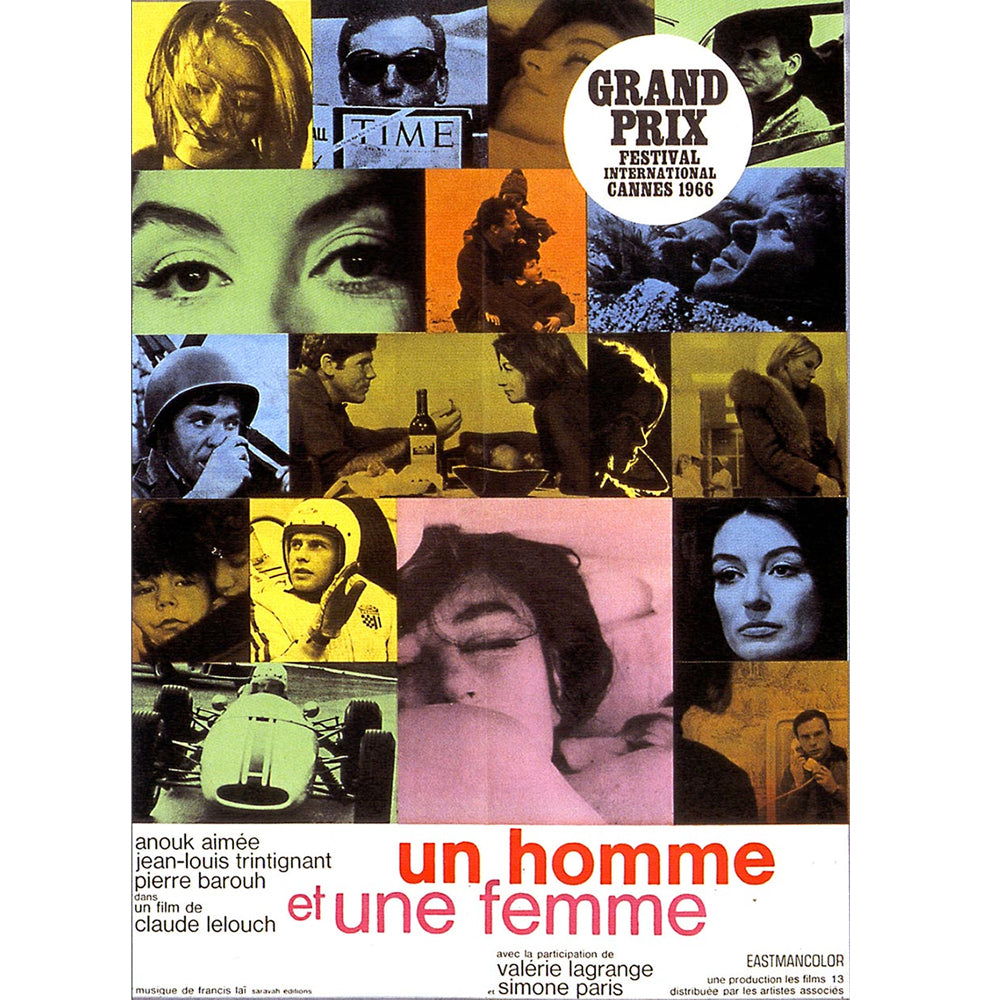Un Homme et Une Femme (A Man and a Woman) is a 1966 film directed by Claude Lelouche (of C'était un Rendez-vous fame, amongst others) with extraordinary dramatic flair. It is a cinematic tapestry of two lonely, guarded people who open themselves up to the possibility of new love, one that won the prestigious Palme d'Or at Cannes, Oscars for Best Original Screenplay and Best Foreign Language Film, as well as a Golden Globe for Best Foreign Language film when the film was released. Lelouche’s film was also celebrated for mixing scenes shot in black and white with those in color.


A Man and a Woman depicts two ordinary individuals falling in love in…well, an almost ordinary way. Slowly, and organically, not like in a lot of mainstream Hollywood films. Widowers Jean-Louis Duroc, a semi-famous rally car driver (Jean Louis Trintignant) and movie script supervisor Anne Gauthier (Anouk Aimée) meet by happenstance when they drop off their children at Deauville boarding school outside of Paris after a weekend outing with their respective children. Jean-Louis offers Anne a ride back to Paris, and although both are very guarded, there is perhaps the spark of something more to come between them. The next weekend Jean-Louis sees Anne again and offers her another ride back to the city. She accepts again, and this is where the attraction starts. It is the process of falling in love. However, they’ll each have to shed some emotional baggage if they are to have a chance at a relationship. Each is still in love with their deceased spouse. Will their past be an obstacle to a possible future?
Lelouche’s directing is fairly leisurely by today’s standards. It does take a while for the film (and the characters) to get its legs, but it's difficult not to sit back, relax, and enjoy this sixties slice of romantic cinema. The cinematography and the actors are beautiful, and Lelouche cuts fairly seamlessly between use of color and black and white, the mixing of which was daring and new in its day. There has been extensive speculation about whether Lelouche switched between color formats intentionally as a storytelling device, because it does seem to work well moving us between past and present, and makes those shifts more poignant and dramatic. However, Lelouche later dispelled the theory stating that the movie’s budget was inadequate to film entirely in color, so he simply compromised to get the film made. Bravo!


Cars play an almost pivotal role in the film. Jean-Louis is a race-car driver so there are multiple scenes with people racing and working on cars. And of course, Jean-Louis and Anne fall in love in one. That car is a Ford Mustang, as are all Jean-Louis's cars, be it in his personal or professional life. This was probably due to product placement as Ford gets a lot of screen time in A Man and a Woman, and the Mustang is the one that carries Jean-Louis back to Paris (after literally just competing in the Monte Carlo Rally in his 1966 Mustang) after Anne tells him that she does love him. He drives his Mustang racecar back to Paris, even after driving thousands of miles across Europe for the rally. Well, I suppose you would if the woman you loved told you she also loved you for the first time. And it is the Mustang that Jean-Louis drives to the Paris train station at the end of the movie so he can meet Anne again at the end of the film.
The film defines a mood piece. A Man and a Woman contains the soft focus, long lens shots, and almost poetic imagery, sometimes without dialogue, that you'd expect. While some may criticize the film as slow moving, the build up of Jean-Louis and Anne’s love and worlds feels very complete. Their story feels realistic and natural. The open ending may leave viewers wondering what might happen next for the two main characters, but it feels right. And for those feeling unreseolved, Lelouche revisited the characters in a sequel, A Man and a Woman: 20 Years Later, which was released in 1986 with Anouk Aimee and Jean-Louis Trintignant reprising their roles.
To buy the DVD on Amazon, click here.
To search for the movie poster on Ebay, click here.

Image Sources: movieposters.2038.net, levideoshelf.blogspot.com, imcdb.org, acertaincinema.com, xpatathens.com




















































